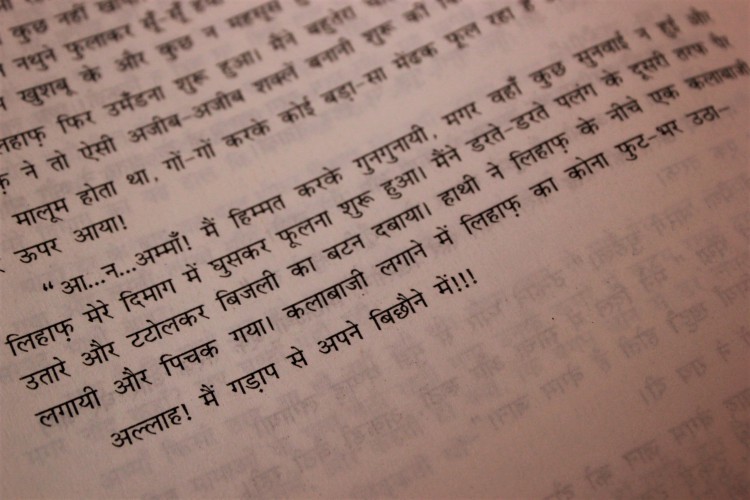h2>Dating : The Dynamic Folds of Lihaaf
If you’re looking for a brief yet deep-impacting experience, Ismat Chughtai is the author to turn to. In her short story Lihaaf (The Quilt) I found an insight into the pre-partition domestic world, dynamic in its robust beliefs and delicate relationships. One of the well famous literary deviants of that era, Chughtai published this story in 1942 in the Urdu literary journal Adab-i-Latif, and later faced strong allegations for the same.
Narrated by Chughtai from a child’s perspective, the story is purely suggestive yet deeply meaningful. The candid testimony is sparked by her trademark witty descriptions, lending the story an essence of acknowledgement curtained by innocent language. The controversy around this story is not unknown to many, but the fact that Chughtai was able to win the case against alleged obscenity is owed to precisely this clever use of simple language. Through the incidents that take place in Begum Jaan’s house, Chughtai breathes life into the well known (but far less understood) concepts of sexuality and lesbianism. From Nawaab Sahab’s queer shenanigans to the sexual games that his wife finally resorts to, every tangent of the story highlights how no two people can be deciphered the same way, and that what happens under the lihaaf (both literally and metaphorically) can only be left to the imagination.
A deeper study of the story enlightened me on the nuanced concept of lesbianism, and how deeply it is confused with homosexuality today. It often becomes the duty of the reader to contextualise a rich text, doing away with personal bias to the maximum extent. A good story, on the other hand, is not always about the plot itself, but more about the way it is narrated. This is one of the biggest elements that account for Chughtai’s idiosyncratic writing — one that unequivocally exposed and negated the social norms of her time. So much so, that her writings are still banned in parts of the world today. And yet, actions fail to speak louder than words sometimes. Chughtai’s writing of Lihaaf touches something deep inside the reader not just with its insinuations, but with the possibility of there being something more, of there being a hidden door into this handpicked domestic tale and the flavoured backstories of a grossly unjust marriage. In all naturalness the misogynistic culture of the time is embedded in the crux of this story, in the very reason why the narrator ends up tangled in this web of possibility in the first place. Women through generations have faced discriminatory social and psychological dismissal, age hardly playing a factor in the affliction.
While ‘The Quilt’ expresses ideas and norms perched in many cultures around the world (to some degree or another), not a lot of writers have been successful in translating its essence in just honesty. The text I read was the translation by M. Asaduddin, which takes on a sardonic tone with a touch of malice that somewhat overpowers the beauty of the original perspective. What an art it is to paint shameless adultery with a pure perspective of innocence. What a timeless lesson it is to dive deep into the minds of the characters without breaking them down or stripping them bare of their eminent social facades. All of this in just a handful of pages.




